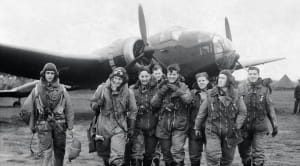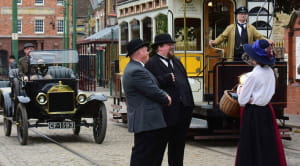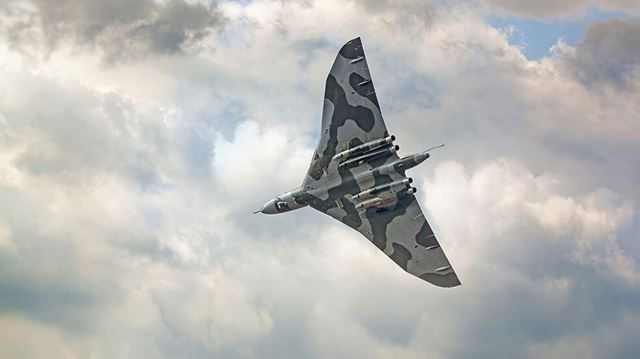
Celebrate the iconic aircraft, ahead of the Boundless Avro Vulcan event on 28 November
Born at the dawn of the atomic era and named after the Roman god of fire, the Vulcan bomber became an almost instantly iconic plane.
Beloved by pilots for its highly responsive handling and adored by aviation enthusiasts everywhere because of its sleek lines and howling battle cry, it was the world’s first large delta-winged aircraft, establishing a design path for the Concorde and the Space Shuttle.
Vulcans shouldered Britain’s nuclear deterrent during the Cold War, but they only took to the sky in anger once, carrying conventional weapons on a record-setting mission to the Falkland Islands in 1982, right on the eve of the aircraft’s operational retirement. Even since being decommissioned, the Vulcan has remained the most distinctive plane in the RAF’s post-WWII fleet.
The Avro Vulcan: the birth of an icon
On 8 January 1947, the same day Clement Attlee’s government officially decided to begin independent nuclear weapon development (Britain having been frozen out of the United States’ atomic weapon programme after the war), the Air Ministry issued a challenge to UK aviation companies: produce a bomber capable of carrying a 10,000lb payload for 1,500 nautical miles.
Six companies submitted designs for this technically demanding brief and two – from Avro and Handley Page – went into development. A less ambitious plan from Vickers also progressed as a contingency.
At the Avro factory in Manchester, work began on an enormously advanced plane with delta wings, originally conceived by chief designer Roy Chadwick (father of the Lancaster bomber), who was killed in an unrelated crash later that year.
On 30 August 1952, after more setbacks (including the death of a test pilot), the Type 698 prototype (VX770) undertook its maiden voyage at Avro’s Woodford airfield outside Stockport, with the company’s charismatic chief test pilot, Wing Commander Roland 'Roly' Falk at the controls.
Flying solo, while wearing a pinstriped suit and tie, Falk put the plane through a series of moves and then opened the throttle. The resulting roar shattered windows in local factories and the Vulcan legend was aloft. Shortly after this, the bomber thrilled crowds at the Farnborough Air Show.
Together with the Valiant (made by Vickers) and the Victor (Handley Page), the Vulcan would spearhead V-force, the RAF’s new and awesomely powerful post-war ensemble of aerial fighting machines.
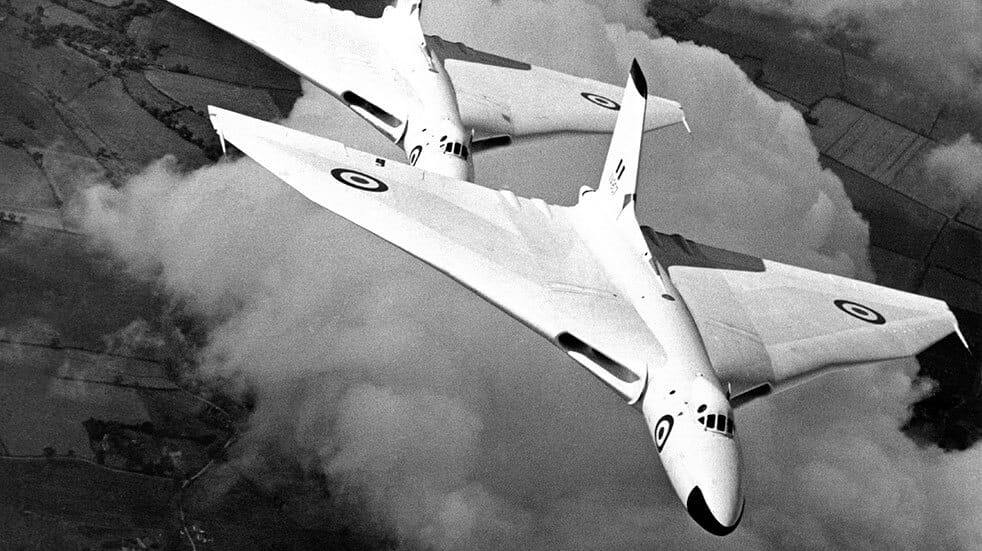
Some more amazing historical stories:
Celebrating 100 years of the RAF
Looking back at the Moon Landing 50 years on
Members share stories of World War II
The Vulcan in the RAF
The Avro aircraft quickly becoming the darling of the three V-bombers. Powered by four Bristol Olympus engines embedded in its enormous wings, and flown by elite five-strong crews, the Vulcan was fast and nimble, with the range and brawn of a bomber, but a level of manoeuvrability more associated with a fighter plane. At Falk’s suggestion, the traditional bomber control wheel was even swapped out for a fighter-style control stick.
The tailless delta-wing design earned it the affectionate nickname ‘the Tin Triangle’, but the Vulcan’s agility and stunning silhouette – plus the hair-raising howl its engines produced – made it an instant favourite with pilots and plane fans alike.
The RAF received its first Vulcan in September 1956, and a round-the-world tour was arranged to show off Britain’s newest bird of prey. Sadly, this ended in tragedy when the plane crash-landed at Heathrow, killing four crew members.
The design was refined as the Vulcan evolved, with the B.2 model (in operation by the late 1950s) capable of carrying heavier loads further afield. In total, 134 were constructed at Avro’s Woodford Factory between 1948 and 1965, and the aircraft remained the sharp end of the UK’s nuclear spear during the height of the Cold War era.
Throughout the 1960s, nine operational Vulcan squadrons were spread across Britain, with one plane (later two) from each kept on ‘Quick Reaction Alert’ status. While perched on an ‘Operational Readiness Platform’, all four engines could be fired-up in 20 seconds by hitting one button, and the plane could be airborne within two minutes of intelligence being received about a Soviet attack.
Vulcans were variously equipped to carry British atomic and hydrogen bombs (‘Red Beard’ and ‘Yellow Sun’) and the ‘Blue Steel’ nuclear-tipped cruise missile. As the planned tactical delivery of these weapons changed from high flight to low level in response to developments in Soviet technology, the paintwork on planes went from anti-flash white (designed to reflect thermal radiation from a nuclear explosion) to green-and-grey camouflage better suited to low flying. Vulcans lacked defensive weaponry, however, leaving them vulnerable to air attack.
Fortunately, they never needed to fly with a live nuclear weapon, and in 1969 strategic deterrence responsibility passed from the RAF to the Royal Navy’s Polaris submarine fleet. Throughout the 1970s, Vulcans continued to operate as tactical bombers, with nuclear and conventional capability, but were also used for transportation, reconnaissance and air-to-air refuelling.
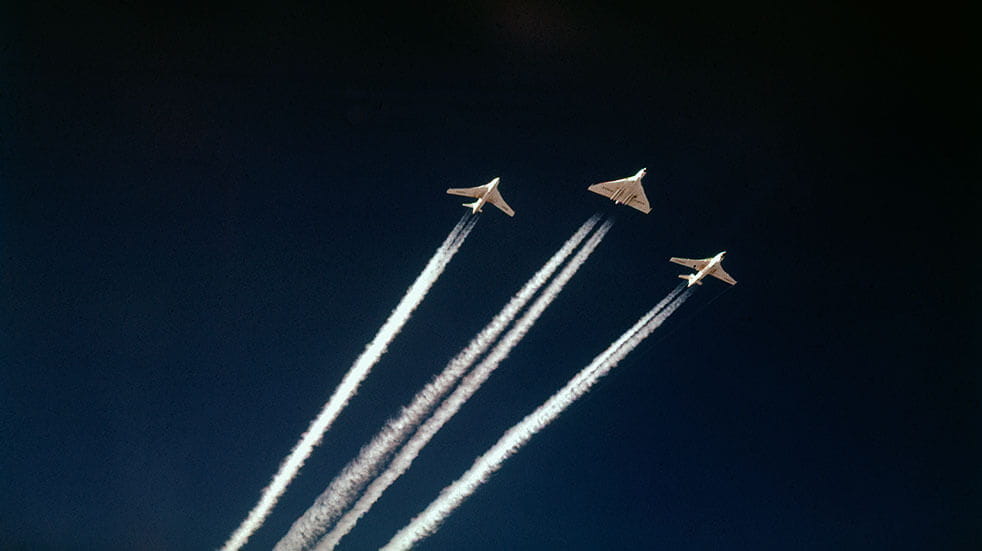
The Vulcan in the Falklands War
Mere months before the Vulcan was due to retire, V-bombers were suddenly sent into action after Argentine forces landed on the Falkland Islands in April 1982. During the resulting conflict, Vulcans flew seven missions, taking off from Ascension Island and hitting Port Stanley airfield with 450kg conventional bombs.
These ‘Black Buck’ sorties not only disabled the landing strip, preventing Argentina from landing front-line fighters, the 8,000-mile, 16-hour return journeys also set a world record for the longest-ever bombing missions (with mid-air refueling supplied by Victors).
Although six were converted into fuel-carrying tankers, the Vulcan was fully withdrawn from operational service on 31 March 1984. The Avro Vulcan XH558 (Spirit Of Great Britain) was the last of the species to fly, performing at airshows until being fully grounded in 2015.
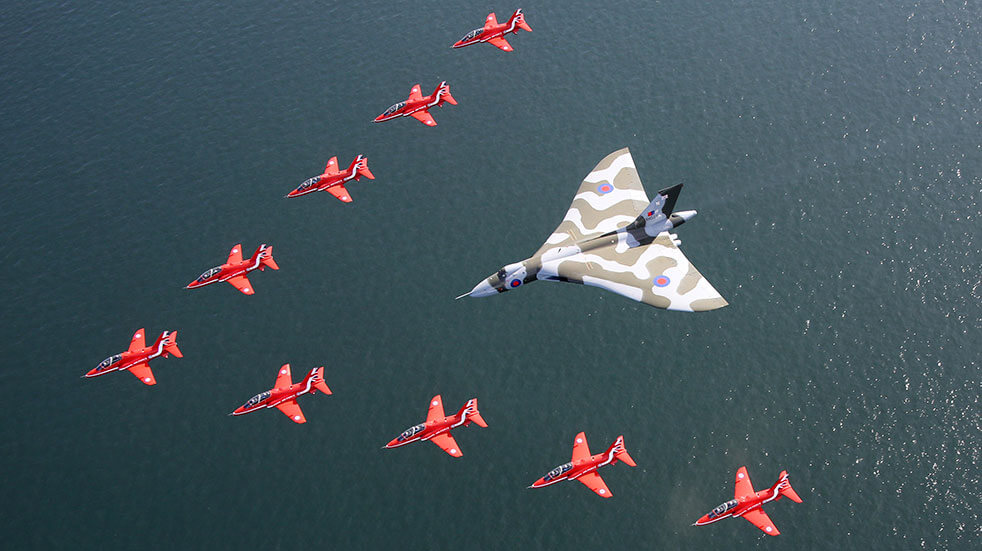
Celebrate the Vulcan with Boundless at our exclusive event
Find out more about the iconic plane while spending an evening with people who have experienced its power firsthand.
Boundless is hosting a special event at the Imperial War Museum, Duxford on 28 November, where you can meet Vulcan pilots Martin Withers (who was awarded the Distinguished Flying Cross for his part in the Falkland’s raid); Jonathan Tye (who has survived to tell tales about ejecting, crashing, ditching and enduring force-landings) and Vulcan Navigator Anthony Wright (also involved in the long-distance ‘Black Buck’ raids to attack Port Stanley).
This event begins with a drinks reception under the wings of an Avro 698 Vulcan, followed by a private viewing of the AirSpace exhibition about the history of British aviation. After a three-course meal in one of the museum’s galleries, the special guests will speak about their respective experiences in Vulcan aircraft.
Vulcan B.2 specs
Powerplant: 4 x Bristol-Siddeley Olympus 201 or 301
Wingspan: 111 feet
Maximum speed: 644 mph
Range: 4,000 nautical miles (4,603 miles)
Maximum weight: 250,000 lbs
Capacity: 5 crew
The Vulcan: did you know?
- In a Vulcan, only the pilot and co-pilot were provided with ejection seats. In an emergency, the other three crew members had to try and escape via the crew entry door in the floor of the cockpit.
- In the early 1980s, just months before the Falklands conflict, Argentina approached the UK with a proposal to buy a number of Vulcans.
- In 1961, a Vulcan made the first non-stop Britain-to-Australia flight. The 11,500-mile flight involved three mid-air refueling (over Cyprus, Karachi and Singapore) and took 20 hours and 3 minutes, travelling at an average speed of 573 mph.
- A set of £2 coins launched in 2018 to celebrate the Royal Air Force’s centenary features the Vulcan Bomber.
- During the 1955 Farnborough Airshow, test pilot Roland 'Roly' Falk was rebuked for barrel-rolling a Vulcan at the top of the post-take-off climb. Apparently, performing aerobatics in an aircraft weighing 69 tons and with a 99-foot wingspan was "not the done thing”.
The Vulcan: Boundless members’ memories
“I was fortunate in seeing it visit the RNAS Portland airshow with family decades ago and as it climbed away from the crowd towards Weymouth I recall my head splitting with the noise. Massively impressive machine unmatched by anything seen before or since.”
Martin Mather
“We lived under the flight path for the Trooping the Colour flypast. The highlight for us was watching that magnificent machine the Vulcan. It flew over quite low, as we were only about 15 miles from Buckingham Palace. The flypast is not the same without the Vulcan.”
Patricia Yeldham
“My first visit to an airshow, as a 10-year-old, in the late 1970s, was to RAF Leuchars. Three things stick in my memory to this day: a Mosquito (fast and gorgeous), the Red Arrows (still comprised of Gnats) and a couple of Vulcans. We'd seen the Vulcans parked-up at the other side of the runway and thought they were lovely-looking... It wasn't until one took too the air that we realised how absolutely HUGE they were, with those v-wings. And, as we were appreciating the sight, there was also that astonishing crackling roar it made during take-off. Absolutely unforgettable.”
William Mearns
Images © Getty


